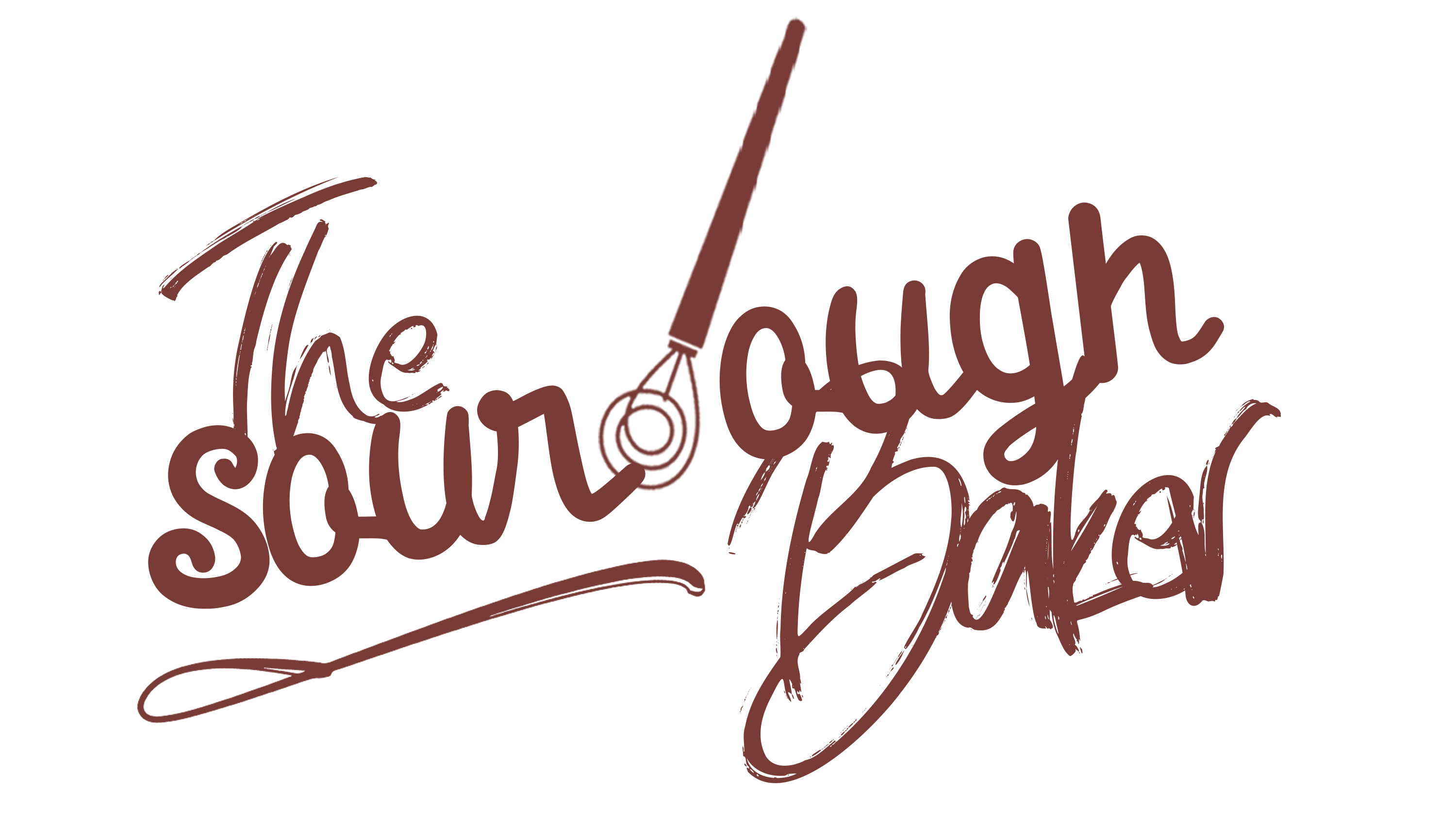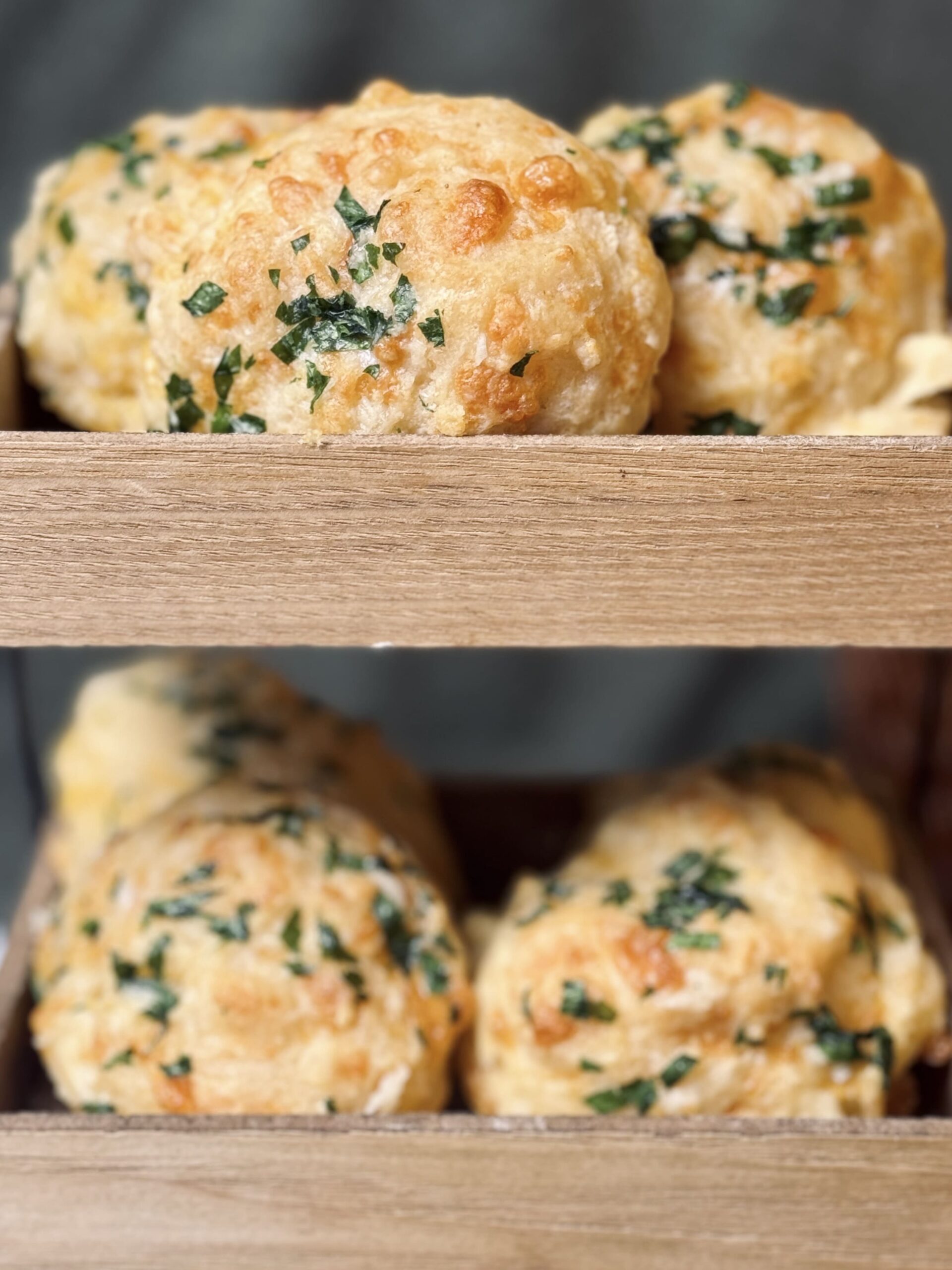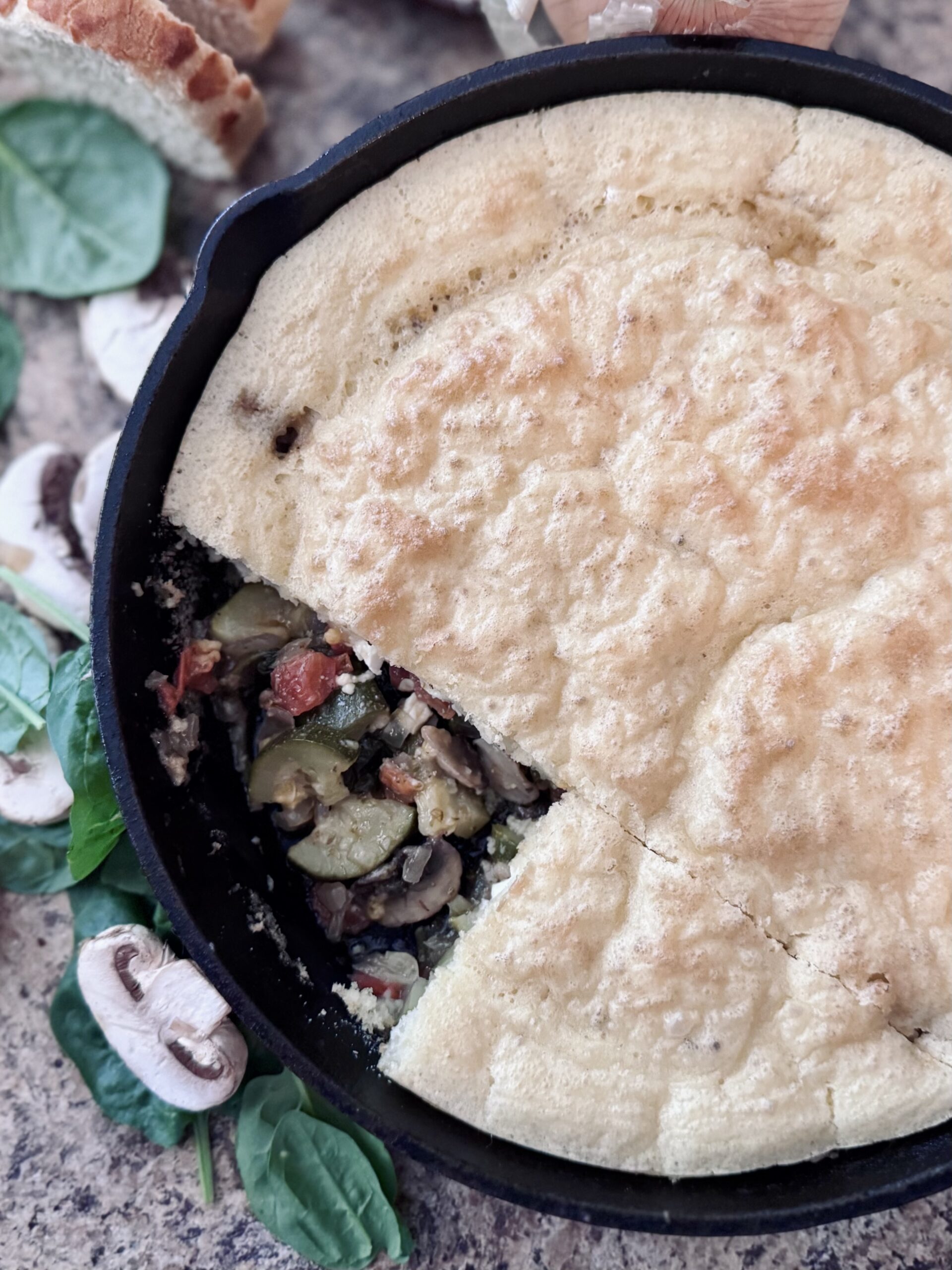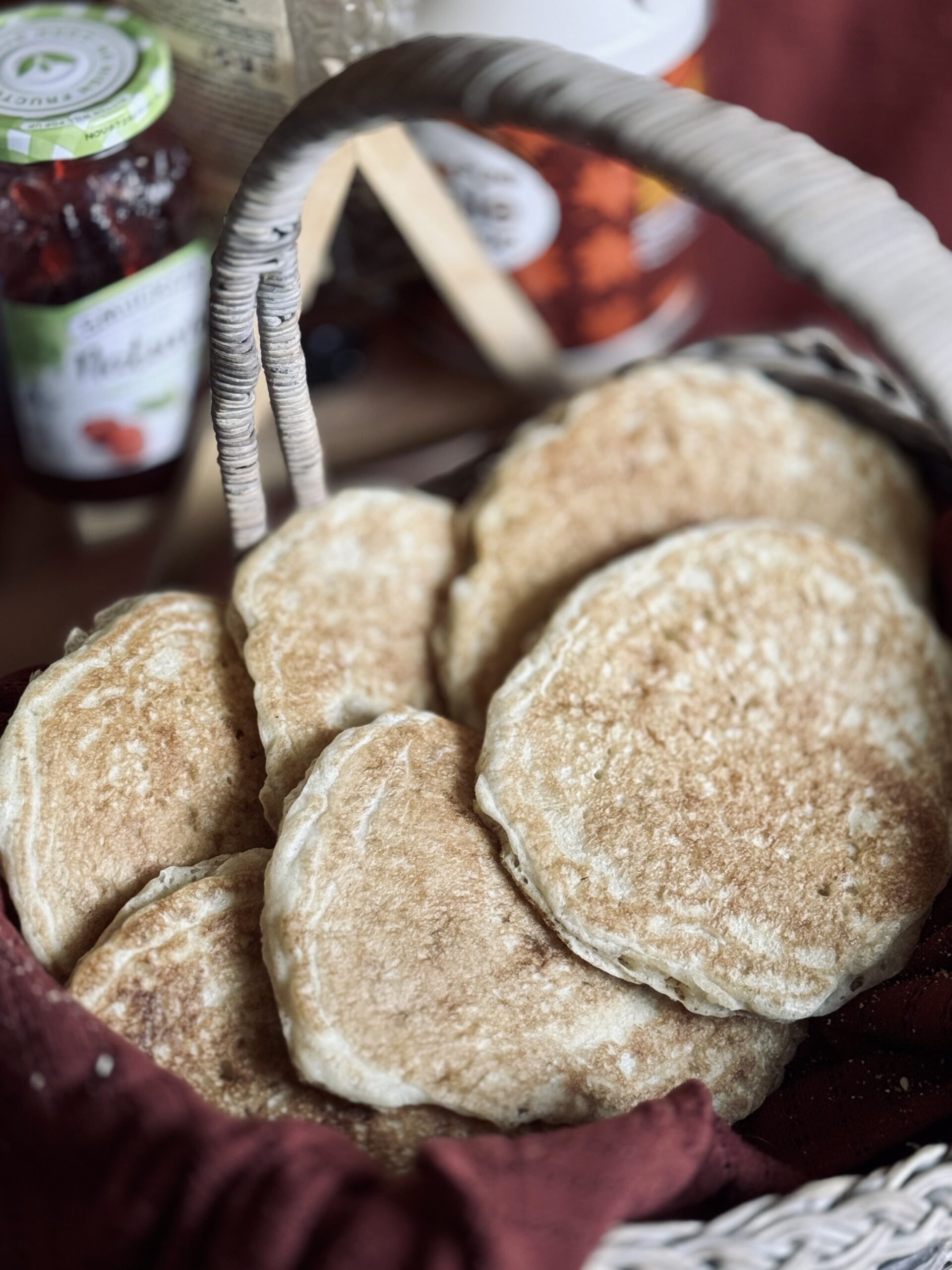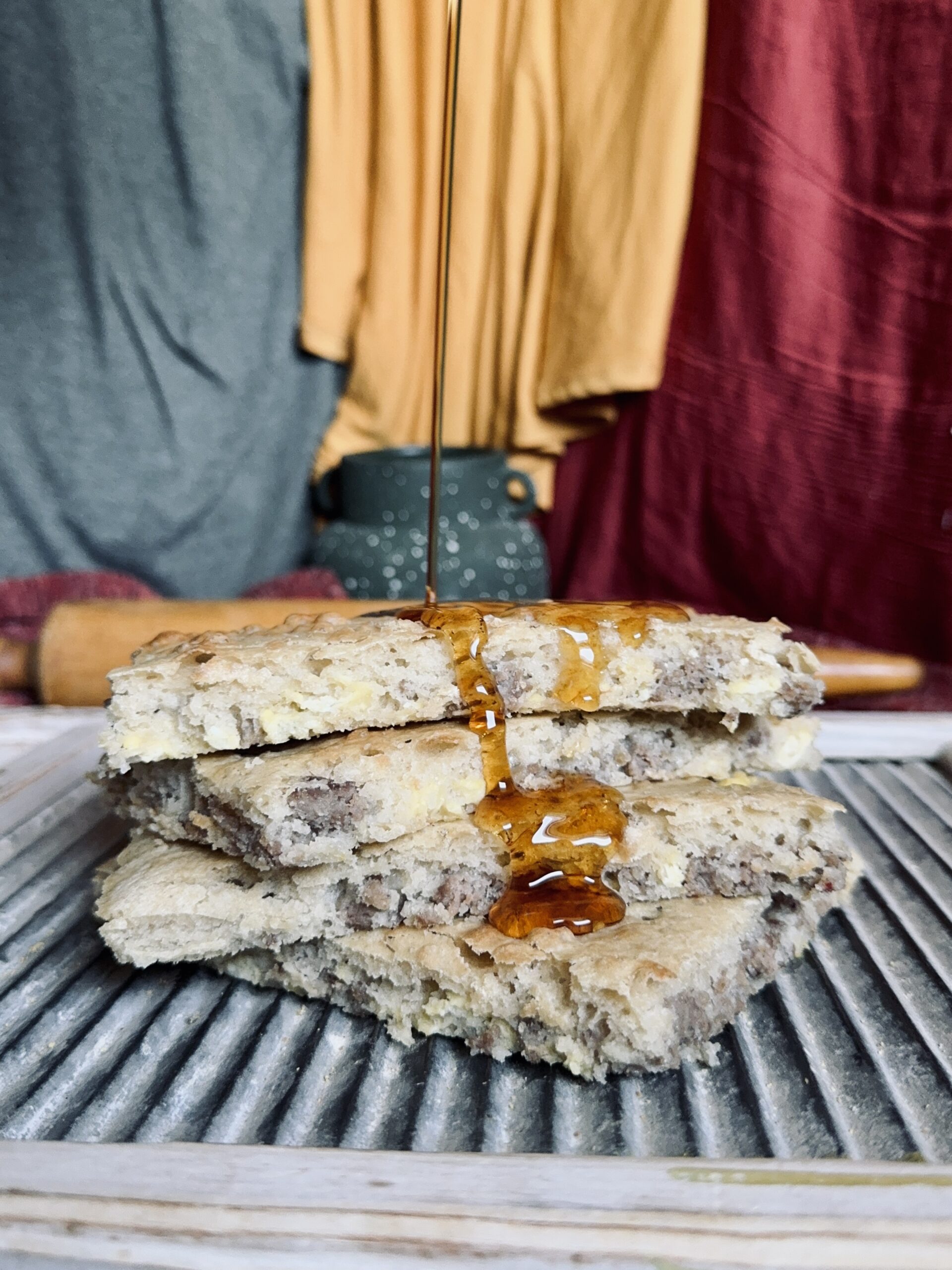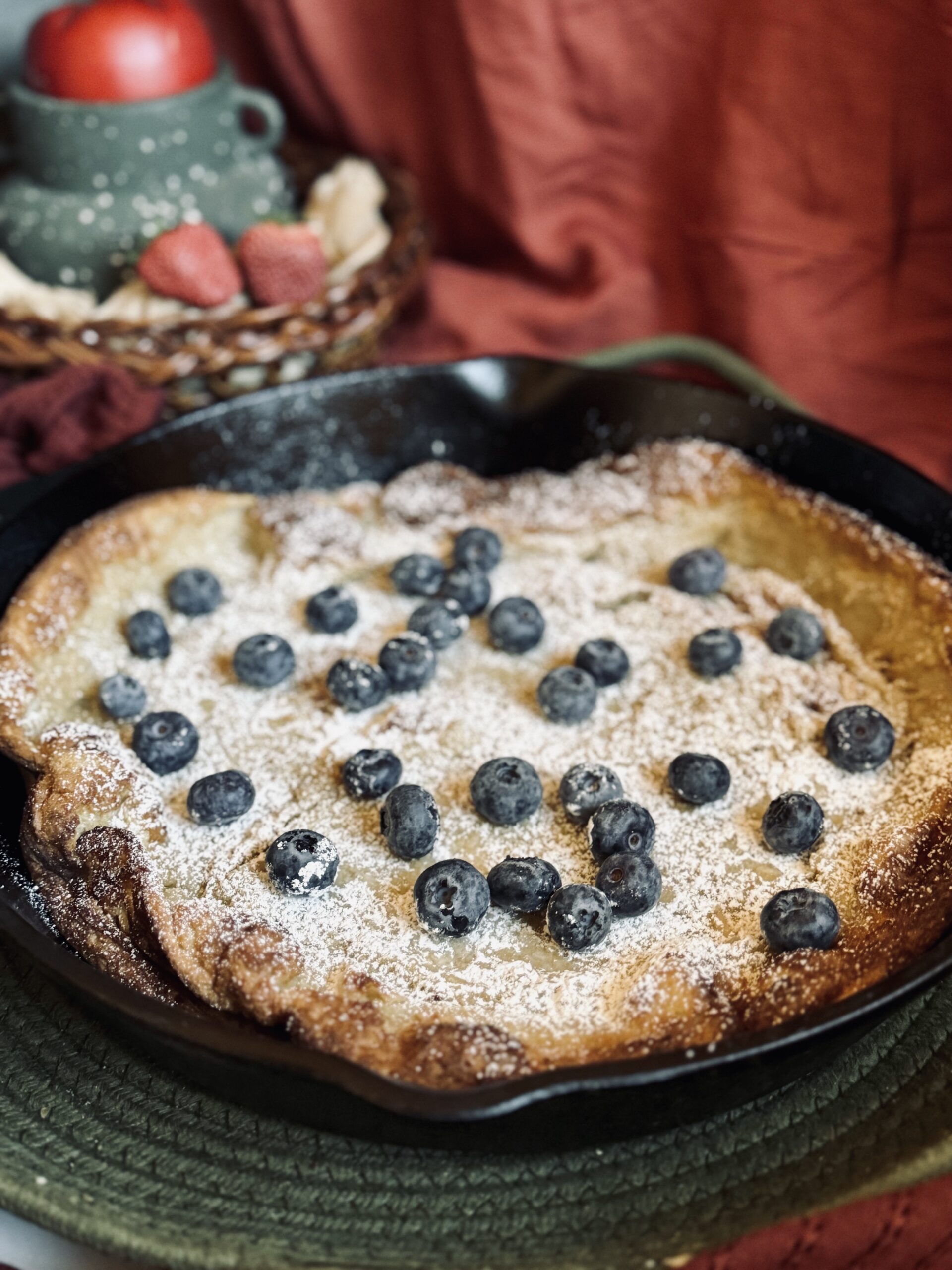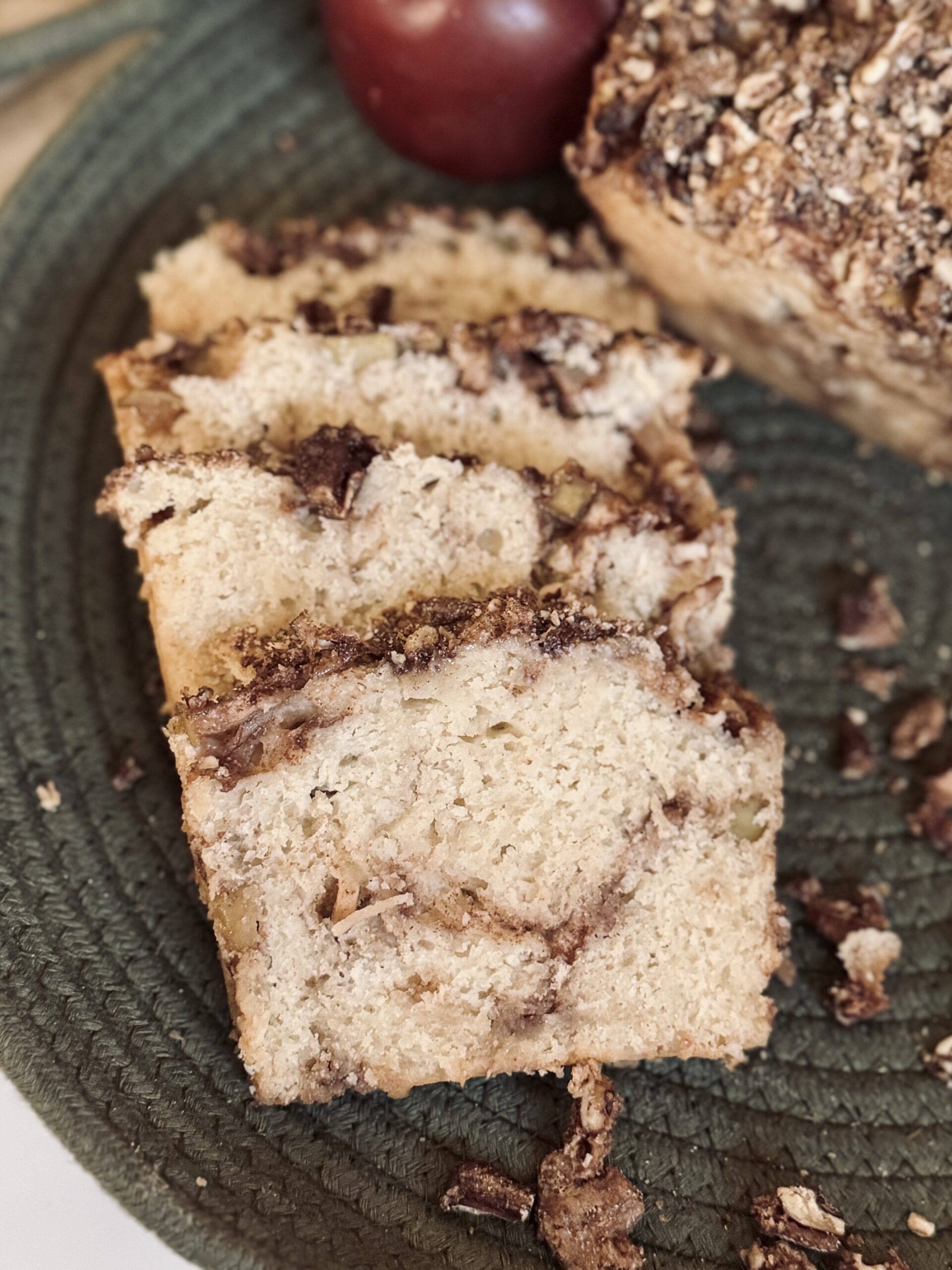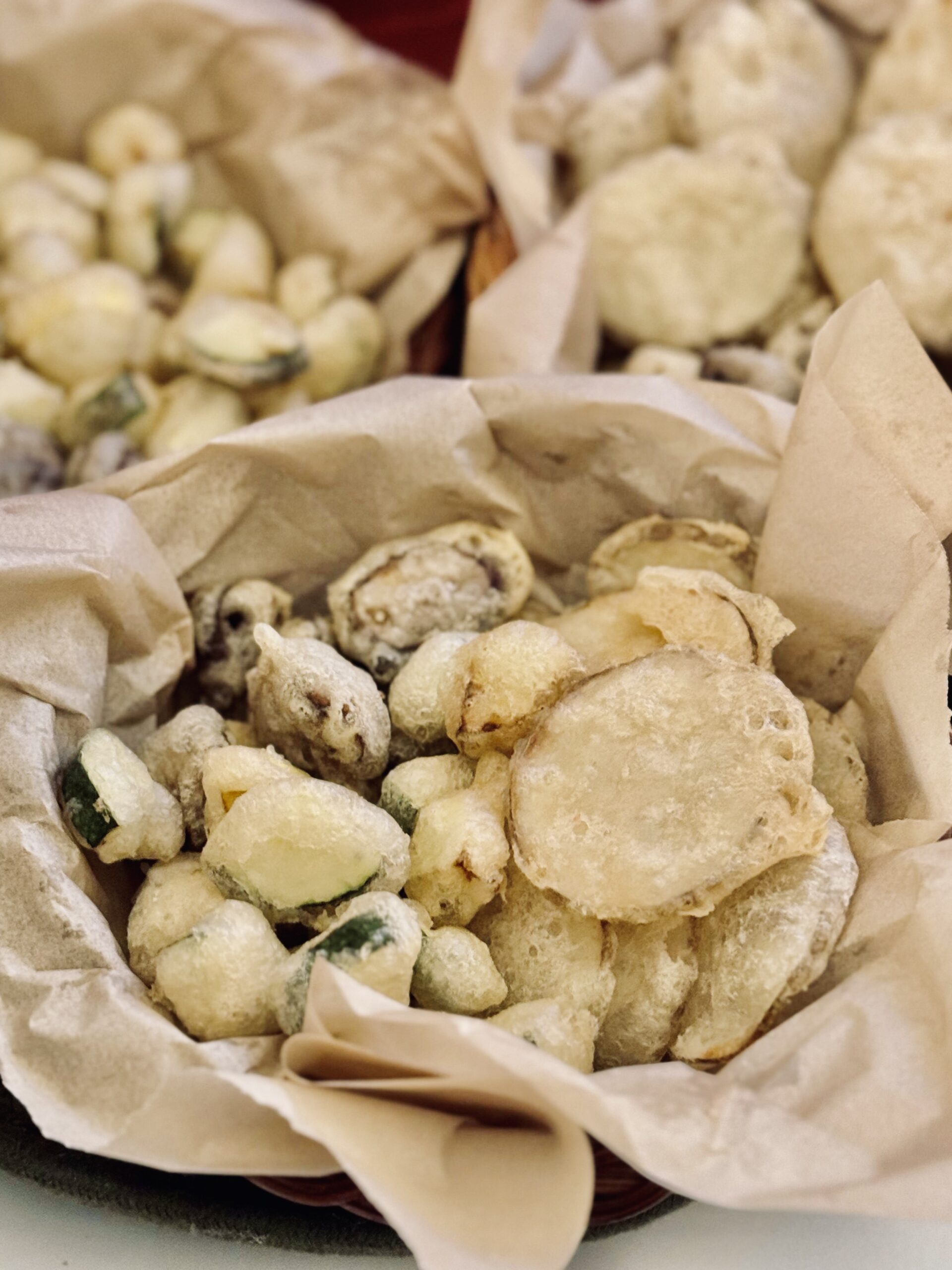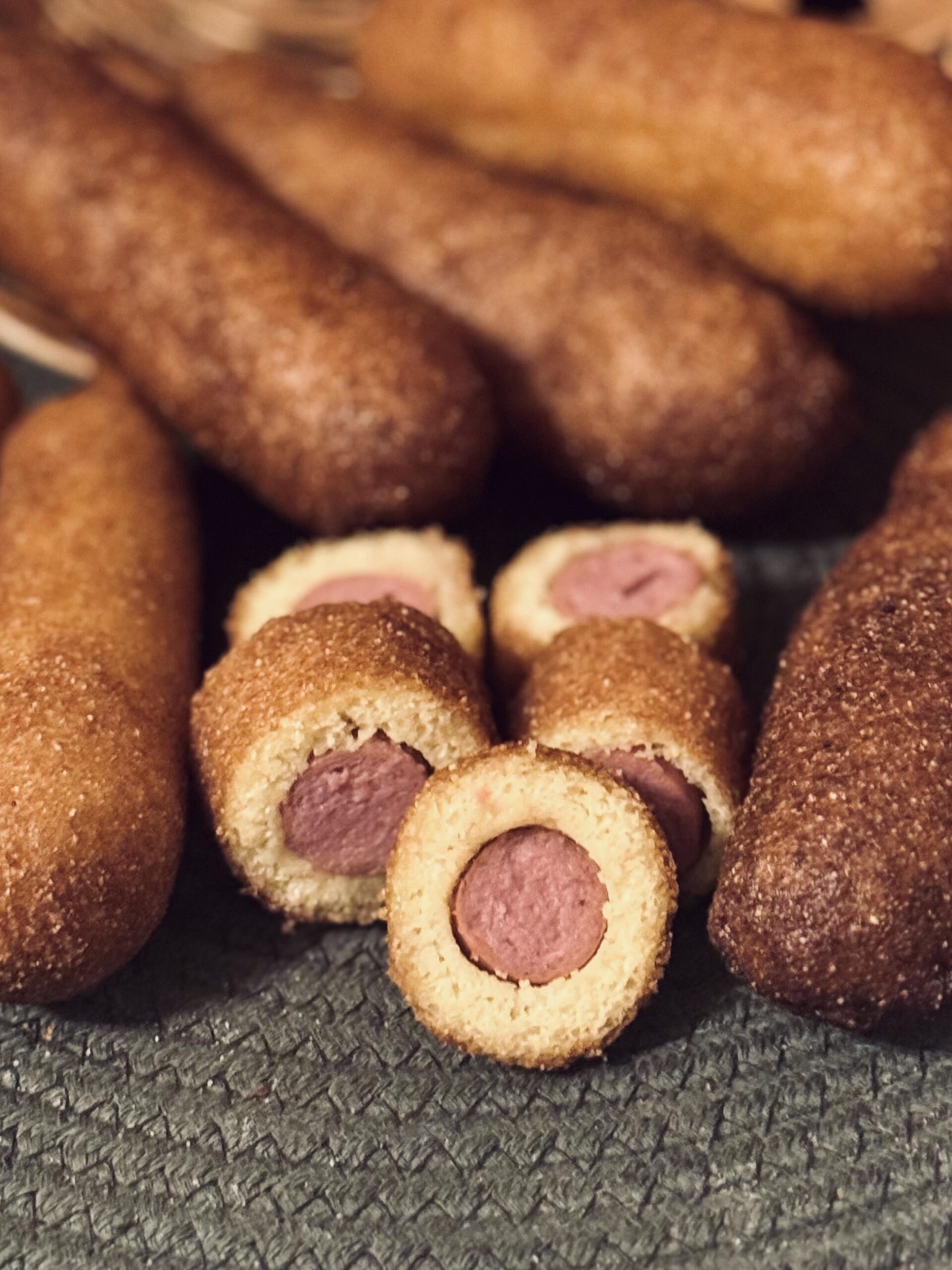About This Recipe
Drop biscuits. A simple version of a biscuit. While some biscuits are layered, these are flavored. This recipe is an enhanced “copycat” of Red Lobster’s recipe. Not only is there a major flavor boost from the use of fresh ingredients, but the incorporation of sourdough and heritage flours means this recipe is truly feel-good. It is the perfect companion to a variety of dishes – from casual meals to more elaborate dinners.
What Is A Drop Biscuit?
A drop biscuit is a type of biscuit that is made by dropping spoonfuls of dough onto a baking sheet, rather than rolling out and cutting the dough into shapes. This method is a quick, easy, and convenient option for home bakers. Drop biscuits have a more rustic and uneven appearance compared to other types of biscuits with crispy, slightly browned edges and a soft, tender interior.
A Brief History Of The Cheddar Bay Biscuit
Cheddar Bay biscuits are a staple of Red Lobster chain restaurants around the world, developed by their own culinary team in 1992 to complement the seafood offerings and provide a warm, flavorful bread option. The biscuits were first introduced under the name “Freshly Baked, Hot Cheese Garlic Bread,” which was later changed to “Cheddar Bay Biscuits” to evoke a coastal, seafood-friendly image and to reflect the cheesy, savory nature of the biscuits. “Cheddar Bay” is a fictional place created to enhance the marketing appeal of the biscuits, suggesting a seaside origin. The biscuits quickly grew in popularity, remaining a staple item of Red Lobster restaurants even today.
Sunrise Flour Mill Heritage Flours
Sunrise Flour Mill’s story began with the desire to make a good loaf of bread. During the process, the owners (Darrold and Marty Glenville) discovered how important high-quality flour was in the process. During their journey to learn the science of bread, and after increased habits of bread consumption, numerous health issues began to occur. After going gluten-free, the health issues settled, but the desire for good bread did not.
After much research, the couple discovered the major differences between modern wheat, what they had been eating and baking with, and heritage wheat. They had high hopes that the switch to heritage wheat would solve their flour problem, and, sure enough, they were right! The health complications demolished and the gluten-free diet was no longer necessary.
So began their mission to bring heritage wheat to the world. Sunrise Flour Mill’s organic, heritage wheat is more nutritious (higher in protein, vitamin, and mineral content) than other flours. These organic, heritage grains are easier to digest, and, especially when paired with the fermentation benefits of sourdough, mean many who are gluten-sensitive are able to enjoy real bread again. To learn more about their flour and the products they offer, visit their website here.
What I Love About This Recipe
When I first posted this recipe on Instagram, it went viral. And, because of that, I learned how the real Red Lobster Biscuits are made. Bisquick, water, soy cheese – not this recipe.
While this is meant to be a copycat recipe turned sourdough, I think it turned out so much better. These biscuits are packed with flavor and so incredibly good for you. Made from quality and fresh ingredients, these biscuits are not only absolutely stunning, but also great for your health.

All The “Why’s”
Sunrise Flour
Sunrise Heritage White Flour is basically a better-for-you all-purpose flour. Heritage grains, compared to modern wheat, are much easier to digest, making this recipe that much better. Really any flour that has a lower protein content (under 12%) is best for a recipe like this because gluten is undesirable. We want these biscuits to be flaky, not chewy. In fact, the lower the protein content, the better. Though I have not tested it, cake flour may even work wonders. The problem is: cake flour is not a staple ingredient in many homes; therefore, I choose not to base a recipe off of it unless it is absolutely necessary.
Baking Powder
This is a quick recipe, so I use baking powder, over sourdough, to leaven the biscuits. I prefer chemical leavening for sourdough discard recipes because we are using starter that is not in its prime state, and may not leaven well. While it is true that the addition of flour feeds the yeast, and you may get a slow rise, sourdough-discard-leavened biscuits have the potential to be more sour, due to the ever populating bacteria (which are responsible for the sour flavor) and still may not rise properly.
Salt
Salt brings out flavor in any dish – and that is its exact purpose here. Don’t skip it.
Garlic Powder
Garlic, cheese, and salt make up the flavor profile of Cheddar Bay biscuits, so of course I had to include garlic powder in the batter. Feel free to add more or less depending on your personal preferences.
Cayenne Pepper
This secret ingredient is not classic to Cheddar Bay biscuits, but I think the subtle kick cayenne pepper gives suits and compliments the flavors of these biscuits well. It’s technically optional, meaning you can skip it if you prefer.
Cheddar Cheese
After making this recipe way more times than I would like to admit, we do need to talk about the cheese. The cheese you use may have an effect on the overall moisture of the biscuits, and without careful thought may lead to a dry end result.
First off, I haven’t tested this recipe with anything other than cheddar cheese. After all, cheddar is the last of the trio of flavors we are going for here to get the “Cheddar Bay” flavor profile.
For most of my testing, I used freshly grated sharp cheddar cheese. The “sharp” part does not really matter, it’s the “freshly grated” part that makes a difference.
Pre-shredded, store bought cheese is covered in starch (to prevent caking), which plays a role in these biscuits. The extra starch effectively dries out the dough and makes the biscuits firmer and drier. You can counter this by washing the starch off in the sink; it will easily slip out into the water. Only, then your cheese adds extra moisture to the dough. In my opinion, more moisture is better than less if you have to use pre-shredded. But, for the best results, I do recommend grating the cheese yourself.
Butter
Butter is what makes a biscuit a biscuit. And melted butter is what sets drop biscuits apart from other types of biscuits. Since the butter is melted, it does not produce gases that create layers. Instead, it absorbs into the flour and results in spread.
Aside from the difference in appearance, melted butter also makes drop biscuits easy and clean: mix in one bowl, scoop, and drop them onto the baking sheet. Simple as that.
Sourdough Discard
The sourdough discard in this recipe takes the place of milk (or buttermilk) and some of the flour. The main goal: to use as much as possible and still get great results. In biscuit batter, it serves as a source of moisture and as a binder that brings the dough together.
It is important to note that with this much sourdough discard, your biscuits may or may not be sour. It all depends on your maintenance routine and the health of your starter. You can taste your discard (just a smidgen) before making this recipe – it’ll tell you what the results might look like! I have made this recipe many times and have never had a sour outcome, while others cannot even imagine making a recipe like this because their discard is so sour. Sourness comes from the bacteria in your starter. When they overpopulate, you can taste it.
The Topping
I found that including fresh ingredients in the topping leads to a huge flavor boost, not to mention the stunning appearance. I am pretty sure Red Lobster does not do this for the sake of practicality in their chain restaurant, but, as a home baker, these fresh ingredients can escalate this dish to a whole new level. I would highly recommend following the recipe as written, though I have provided the necessary adjustments for using dried herbs and garlic if you are in a pinch or cannot access fresh ingredients.
Working Order
As mentioned above, keeping the development of gluten low is incredibly important, but this can be difficult with the incorporation of sourdough starter. That is why the order I have written this recipe in is incredibly important. Namely, when the cheese is added. The cheese must be added after the dry ingredients are added, rather than folded in after the batter is mixed. This is because the use of sourdough starter provides a thicker and stickier consistency in the dough compared to a drop biscuit made with buttermilk or other liquid. Working in the cheese after the sourdough starter is added is more difficult, and leads to a significantly increased amount of gluten-development, an undesirable outcome in this recipe.
Baking Temperature + Time
I bake these in a 425 F (220 C) oven for fifteen minutes. These biscuits do not have to be baked as hot as rolled biscuits since the rise will not be as dramatic. Fifteen minutes is the perfect amount of time to cook these babies through, but still keep them soft.
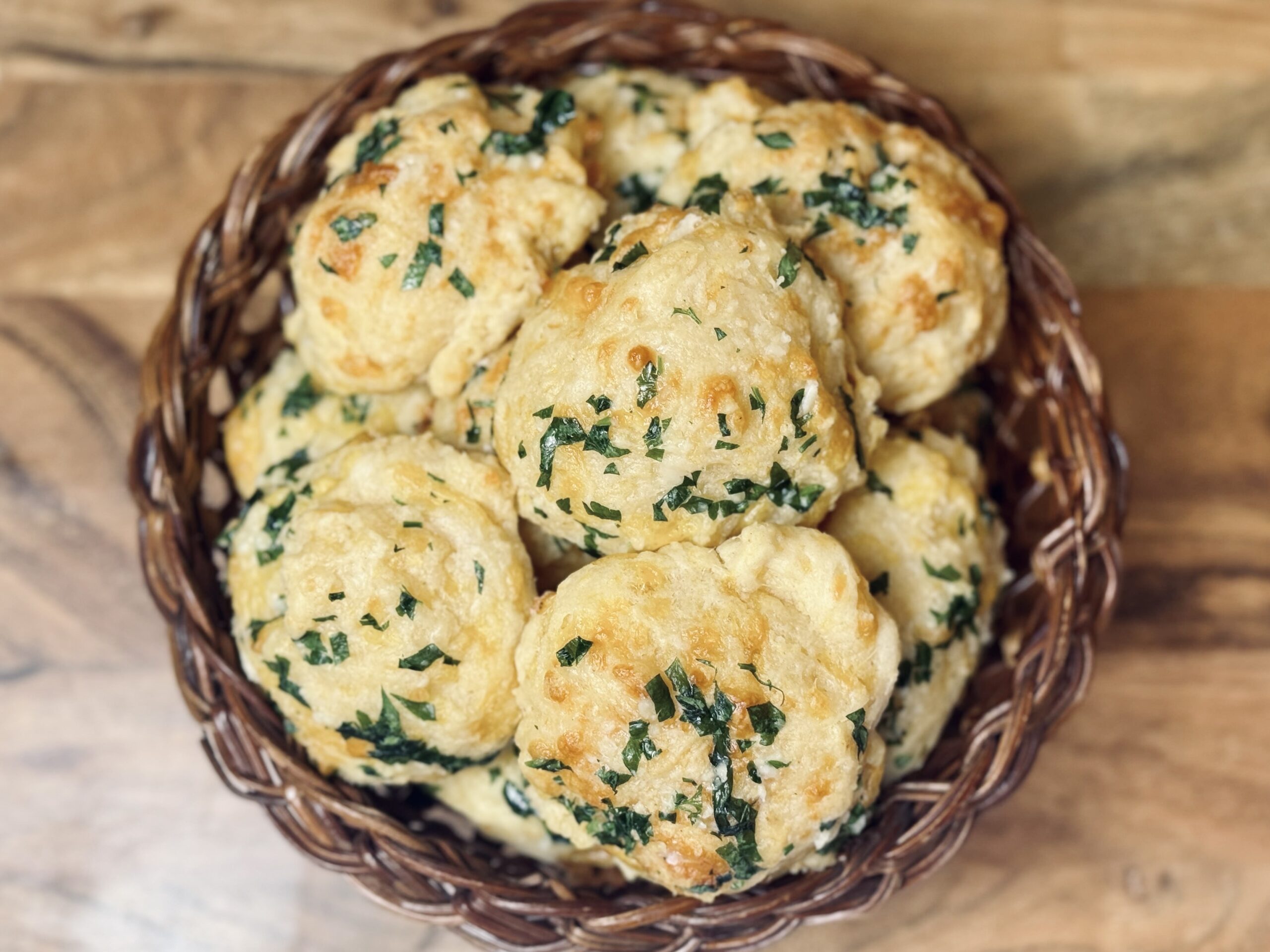
📌 Quick Tip: Read the recipe in its entirety before you start cooking. This will help you understand the ingredients, steps, and timing involved, and allow you to prepare any necessary equipment or ingredients beforehand.
Cheddar Bay Drop Biscuits
Ingredients
For the biscuits
For the topping
Instructions
-
Preheat an oven to 425 F (220 C).
-
Melt the butter and shred the cheese. Set aside.
-
In a medium bowl, whisk the flour, baking powder, salt, garlic powder, and cayenne pepper.
-
Add the grated cheddar cheese and toss to combine.
-
Last, add the melted butter and the sourdough discard. Mix until everything is just incorporated.
-
Using a ¼ cup scoop, scoop the batter and drop onto a half-size sheet pan lined with parchment paper or a silicone baking mat. This recipe makes 10-12 drop biscuits.
-
Bake for 15 minutes.
-
Mix together all ingredients for the topping and brush all over the hot biscuits. Enjoy warm.
Servings 12
- Amount Per Serving
- Calories 267.9kcal
- % Daily Value *
- Total Fat 18.94g30%
- Saturated Fat 11.29g57%
- Cholesterol 50.27mg17%
- Sodium 296.14mg13%
- Potassium 55.81mg2%
- Total Carbohydrate 18.48g7%
- Dietary Fiber 0.73g3%
- Sugars 0.99g
- Protein 6.61g14%
- Vitamin A 166.59 IU
- Vitamin C 1.1 mg
- Calcium 200.86 mg
- Iron 1.05 mg
- Vitamin D 0.08 IU
- Vitamin E 0.55 IU
- Vitamin K 12.1 mcg
- Thiamin 0.15 mg
- Riboflavin 0.15 mg
- Niacin 1.06 mg
- Vitamin B6 0.04 mg
- Folate 18.59 mcg
- Vitamin B12 0.18 mcg
- Phosphorus 210.2 mg
- Magnesium 13.5 mg
- Zinc 0.82 mg
* Nutrition values are auto-calculated and should be used as an approximation only. In addition, the values may not accurately represent the serving divisions of the recipe, instead representing the nutrition of the recipe as a whole.
Notes
- Storage: These are best eaten fresh, but will store on the counter for one to two days.
- Sourdough discard and flour are two of the most inaccurate ingredients to measure by volume. I kid you not when I say I get a different measurement every time. The volume of sourdough discard, specifically, changes drastically depending on how old it is. For best results, I recommend weighing your ingredients.
